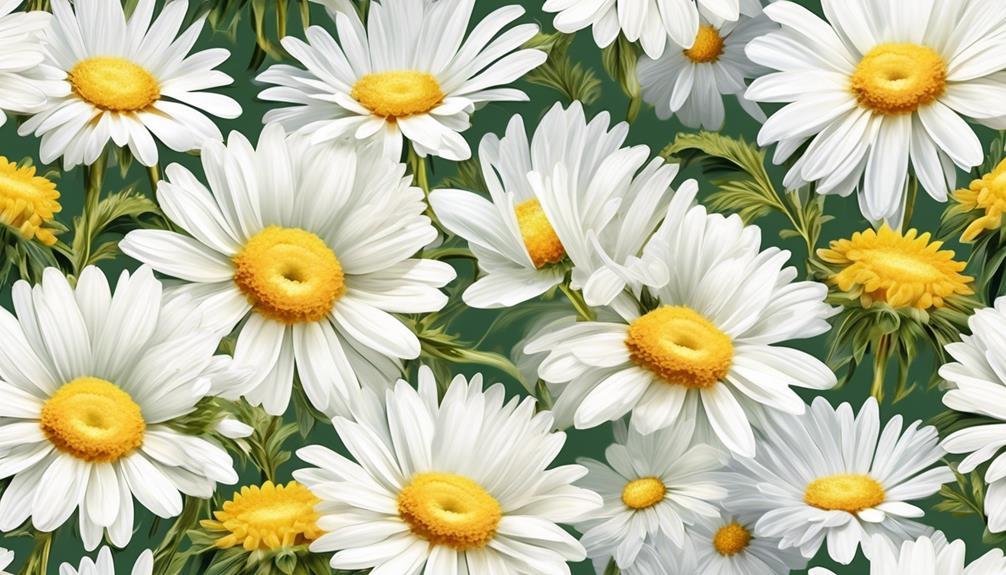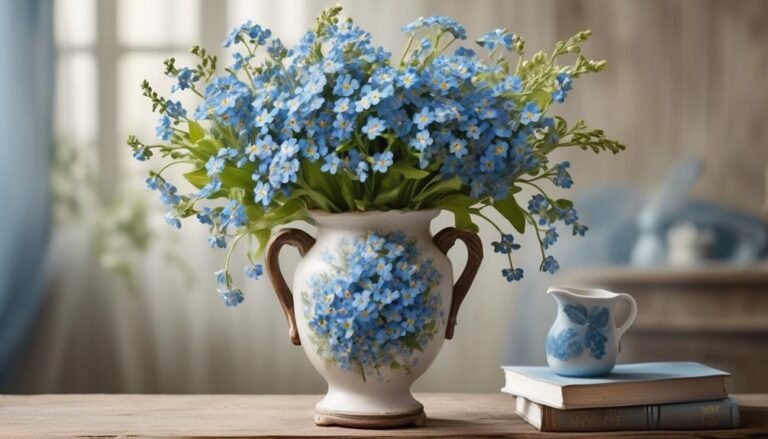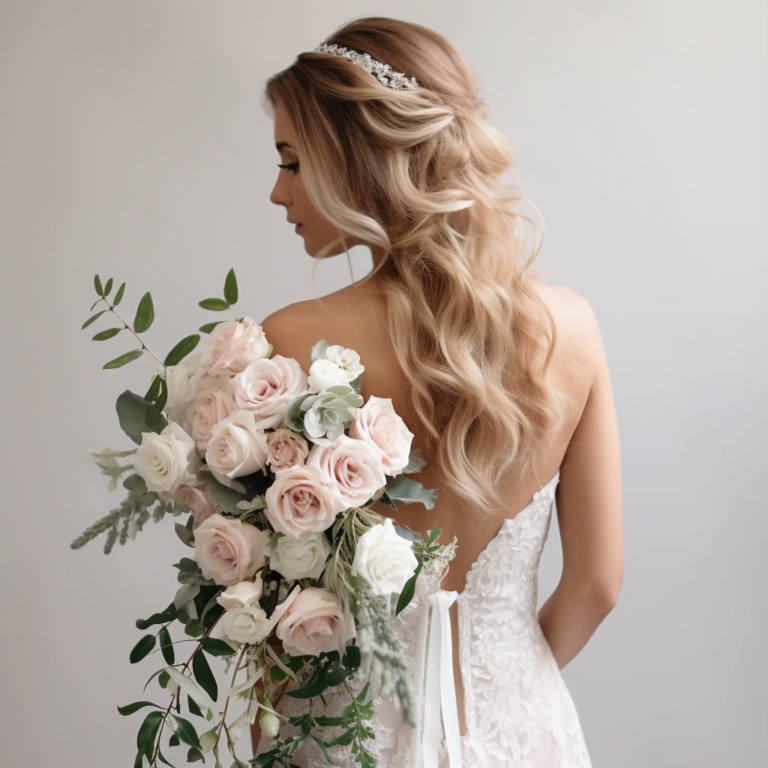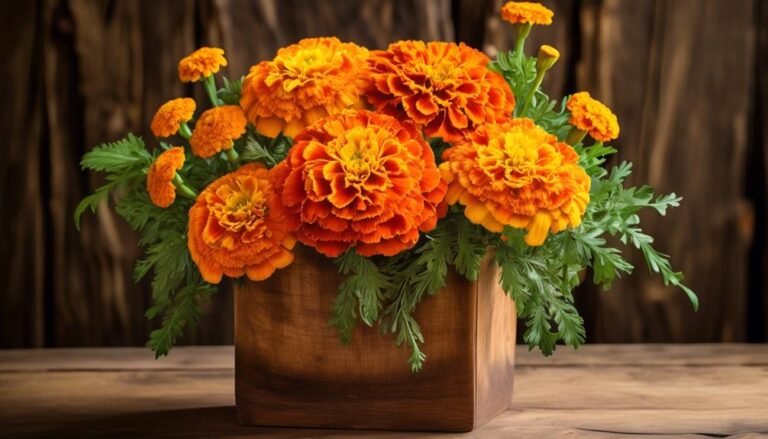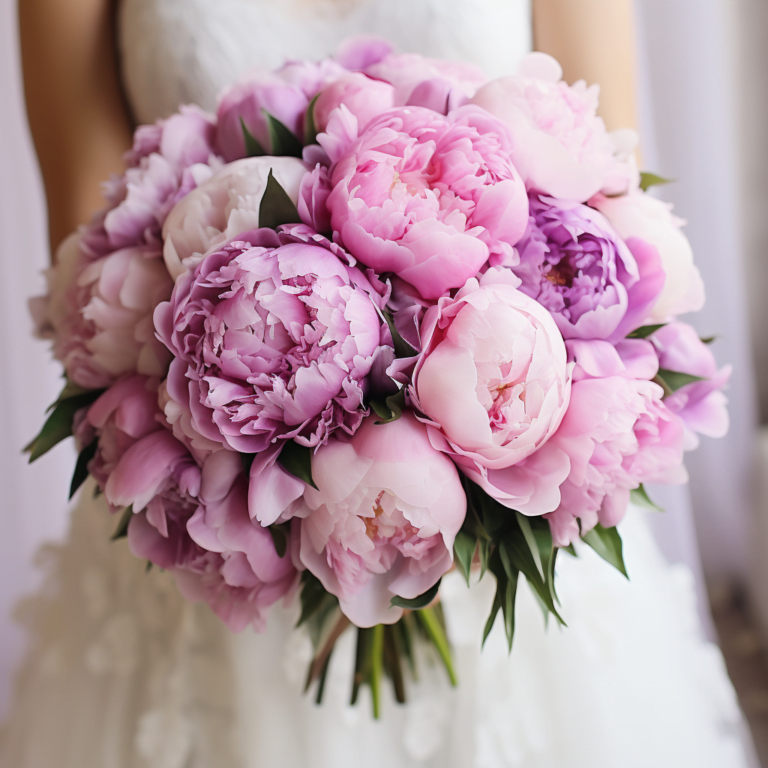Popular Types of Florist Flowers – Daisy
The daisy, also known as Bellis perennis in scientific terms, is a popular flower in the world of floristry. Its charming appearance and bright, cheerful colors make it a top choice for many flower enthusiasts. Let's explore the intriguing world of daisies, from their scientific background to their various colors and characteristics.
Scientific Name: The scientific name of the daisy is Bellis perennis, which translates to 'everlasting beauty.' This perennial plant belongs to the Asteraceae family and is native to Europe and Western Asia.
Colors and Characteristics: Daisies come in a variety of colors, including white, pink, and yellow, often with a contrasting center. They are known for their simple yet elegant appearance, with delicate petals surrounding a vibrant center. Daisies symbolize innocence, purity, and new beginnings, making them a popular choice for weddings, spring bouquets, and garden landscapes.
Uses in Floristry: Daisies are versatile flowers that can be used in various floral arrangements, from rustic wildflower bouquets to dainty hand-tied posies. They add a touch of whimsy and charm to any floral design and are often combined with other blooms such as roses, tulips, and daffodils to create visually stunning arrangements.
Caring for Daisies: Daisies are relatively low-maintenance flowers and can thrive in both garden beds and containers. They prefer well-drained soil and partial sunlight, making them ideal for outdoor gardens or indoor pots. Regular watering and deadheading spent blooms can help prolong the daisy's blooming period.
In conclusion, daisies are much more than just a pretty flower – they have a rich scientific background and are versatile in their use for floristry. Whether you're admiring them in a garden or incorporating them into a floral arrangement, daisies never fail to bring joy with their timeless beauty.
Scientific Name
The daisy, scientifically known as Bellis perennis, belongs to the Asteraceae family of flowering plants. This family is also known as the aster, daisy, or sunflower family. Within the family, the daisy is categorized into the Bellis genus, which includes various species of daisies.
The symbolism of daisies is deeply rooted in cultural and historical contexts. Daisies are often associated with purity, innocence, and new beginnings. They symbolize the arrival of spring and are linked with notions of freshness and simplicity. The iconic appearance of daisies, with their white petals and yellow center, contributes to their representation of purity and beauty.
Botanically, daisies have a composite flower structure consisting of both disk and ray florets, which adds to their appeal. This unique floral structure has made daisies a subject of fascination for botanists and horticulturists. It also contributes to their widespread popularity in gardens and floral arrangements.
Background History
Daisies have a rich history that spans cultural, botanical, and historical significance, making them a fascinating subject of study.
- Evolutionary Origins: Daisies, part of the Asteraceae family, have ancient origins dating back to the Cretaceous period. They've evolved into various species with unique characteristics and habitats, adapting to diverse ecological niches across continents.
- Cultural Significance: Daisies have held symbolic importance in numerous cultures, symbolizing purity, innocence, and new beginnings. They've been used in traditional medicine for their purported healing properties and celebrated in art, literature, and mythology, embodying sentiments of love, beauty, and resilience.
- Botanical Evolution: The daisy has undergone significant botanical evolution, leading to the development of distinct species such as the English Daisy, African Daisy, Gerbera Daisy, and Black-Eyed Susan Daisy. Each species has adapted to specific environments, showcasing diverse flower forms, colors, and growth habits.
- Historical Significance: Daisies have left an indelible mark on human history, being depicted in ancient Roman and Egyptian art and cultivated in medieval gardens. Their journey across continents through exploration and trade has influenced horticultural practices and global biodiversity.
The background history of daisies is a testament to their enduring appeal and their deep-rooted connections to human culture and natural history.
Physical Description
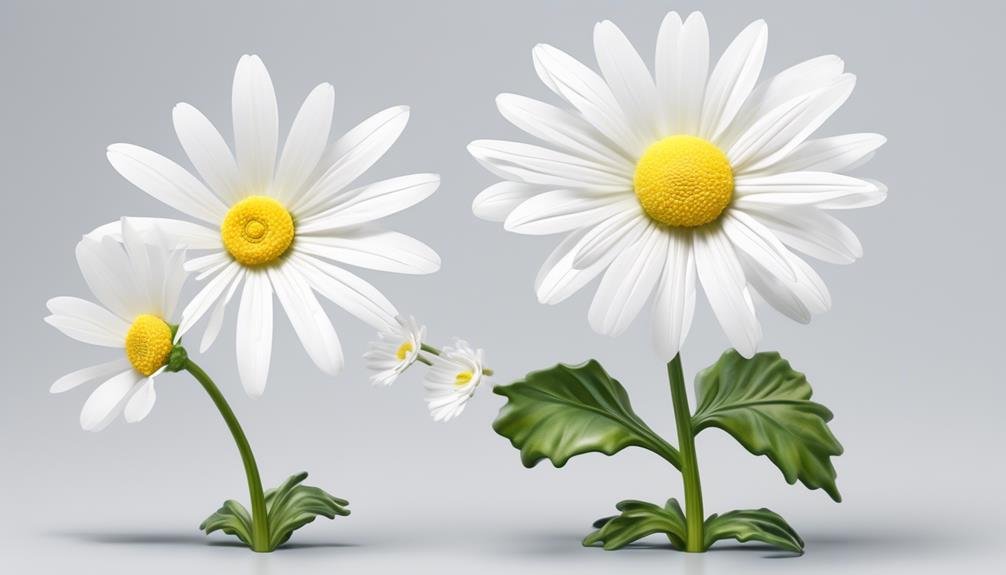
Daisies come in various forms, colors, and growth habits, each with its own unique characteristics.
The English Daisy, also known as Bellis perennis, blooms from March to September and tracks the sun throughout the day. It has white, pink, or red petals with a bright yellow center, symbolizing purity, innocence, and new beginnings.
African Daisies, scientifically called Arctotis, have large pink, orange, red, or yellow petals and are great for ground cover due to their low maintenance and drought tolerance. They hold cultural significance in African folklore, representing hope and transformation.
The Gloriosa Daisy, also known as Black-eyed Susans, attracts bees and butterflies and symbolizes encouragement and motivation.
The Blue Marguerite Daisy, or Felicia amelloides, is characterized by sky blue petals and a bright yellow center, thriving best in mild summer temperatures.
Shasta Daisies, or Leucanthemum x superbum, are low-maintenance perennial plants that grow in bushes, symbolizing purity and innocence and often used to convey admiration and gratitude.
Colours and Characteristics
Daisies come in a variety of colors and characteristics, making them a captivating subject for botanical enthusiasts and gardeners. English daisies bloom in white, pink, red, and blue, adding vibrant colors to gardens. African daisies have large pink, orange, red, or yellow petals, making them eye-catching ground cover options that thrive in sunny conditions. Gloriosa daisies are easy to grow from seeds, attract bees and butterflies, and are unappealing to deer. Blue Marguerite daisies, with their sky blue petals and yellow centers, thrive in mild summer temperatures, adding charm to gardens.
Shasta daisies, similar to common daisies but growing in bushes, are low-maintenance perennial plants that reach about 3 feet tall and 2 feet wide, making them ideal for landscaping. Whether for cut flower arrangements or outdoor garden displays, the wide range of daisy colors and characteristics offers ample opportunities for creating stunning floral compositions.
Varieties Available

Daisies come in a variety of types, each with its own unique colors, sizes, and growing requirements. Here's a quick look at some popular daisy varieties and what makes them special:
English Daisy: These daisies bloom from March to September, following the sun's position. They prefer partial shade and well-drained soil.
African Daisy: Known for their large pink, orange, red, or yellow petals, African daisies require lots of sunlight and well-drained soil.
Gloriosa Daisy: Also called Black-eyed Susans, these daisies attract bees and butterflies. They grow easily from seeds and prefer full sun.
Blue Marguerite Daisy: With sky blue petals, these daisies thrive in mild summer temperatures and well-drained soil.
Shasta Daisy: This low-maintenance perennial grows in bushes and has average water needs. It thrives in well-drained soil and full sun to part shade.
These daisy varieties have different uses, from adding color to gardens and landscapes to being used in floral arrangements. They're attractive to pollinators like bees and butterflies and can adapt to various growing conditions.
Selecting the right variety depends on factors such as the local climate, soil type, and intended use, so it's important to consider these aspects when choosing daisies for your garden or floral designs.
Seasonal Availability
Daisies bloom at different times of the year, with specific varieties flowering from spring to fall. Some daisies thrive in mild summer temperatures, while others prefer cool, moist areas for planting. Certain daisies bloom from summer through early fall, providing a longer window of seasonal availability.
Daisy varieties native to warm climates, like South Africa, may require well-draining soil and plenty of sunlight. Understanding the blooming seasons of daisies is essential for planning garden planting and floral arrangements throughout the year. This knowledge allows for strategic garden layouts to ensure a continuous display of blooms and helps in selecting the right daisy varieties for specific times of the year.
Care Tips
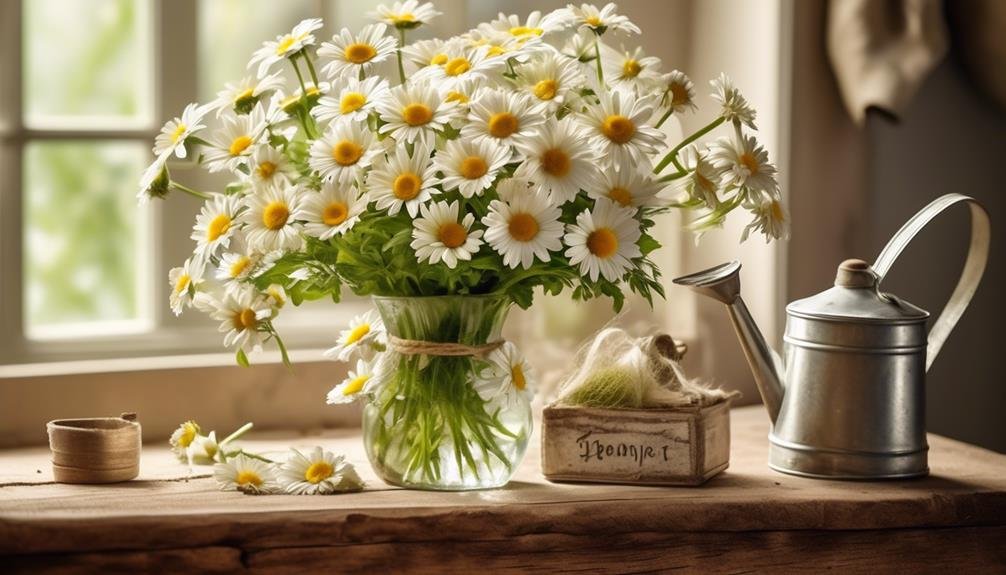
Daisies are easy to care for and can thrive with minimal effort. Here are some essential care tips to ensure your daisies stay healthy and vibrant:
- Watering: Keep the soil moist but not waterlogged. Overwatering can lead to root rot, so it's important to water daisies regularly without overdoing it.
- Sunlight: Daisies need at least six hours of direct sunlight daily to promote vibrant blooms and overall plant health. Make sure to place them in a sunny spot.
- Deadheading: Remove spent flowers to encourage continuous blooming and maintain the plant's appearance. This also prevents the daisies from expending energy on seed production.
- Fertilizing: Apply a balanced fertilizer during the growing season to provide essential nutrients for robust growth and abundant flowering.
- Pest and Disease Control: Protect daisies from common pests and diseases by practicing good garden hygiene and promptly addressing any issues that may arise.
Propagation: Daisies can be divided in early spring or early fall. Dig up the daisy clump, ensuring that each division has both roots and shoots, then replant them immediately in well-prepared soil.
Common Mistakes: Avoid overwatering, inadequate sunlight, and neglecting deadheading. These can lead to issues such as root rot, weak growth, and reduced blooming potential.
Following these care tips and avoiding common mistakes will help ensure the optimal health and beauty of your daisies.
Can Peonies and Daisies be Paired Together in a Floral Arrangement?
Yes, peonies and daisies can be paired together in a floral arrangement. Both are popular types of florist flowers known for their beauty and variety of colors. The combination of peonies and daisies can add a charming and whimsical touch to any bouquet or centerpiece.
Conclusion
The English Daisy, also known as Bellis perennis, is a popular choice for floral arrangements due to its charming and cheerful appearance. This perennial plant, native to Europe, comes in a variety of colors such as white, pink, and red, making it a versatile option for bouquets and garden beds.
Its ability to bloom from March to September adds to its appeal as a florist flower, bringing continuous beauty to any setting. Despite its invasive nature in some regions, the English Daisy remains a beloved addition to gardens and floral displays.
With proper care, it can thrive and bring joy with its ornamental value.
